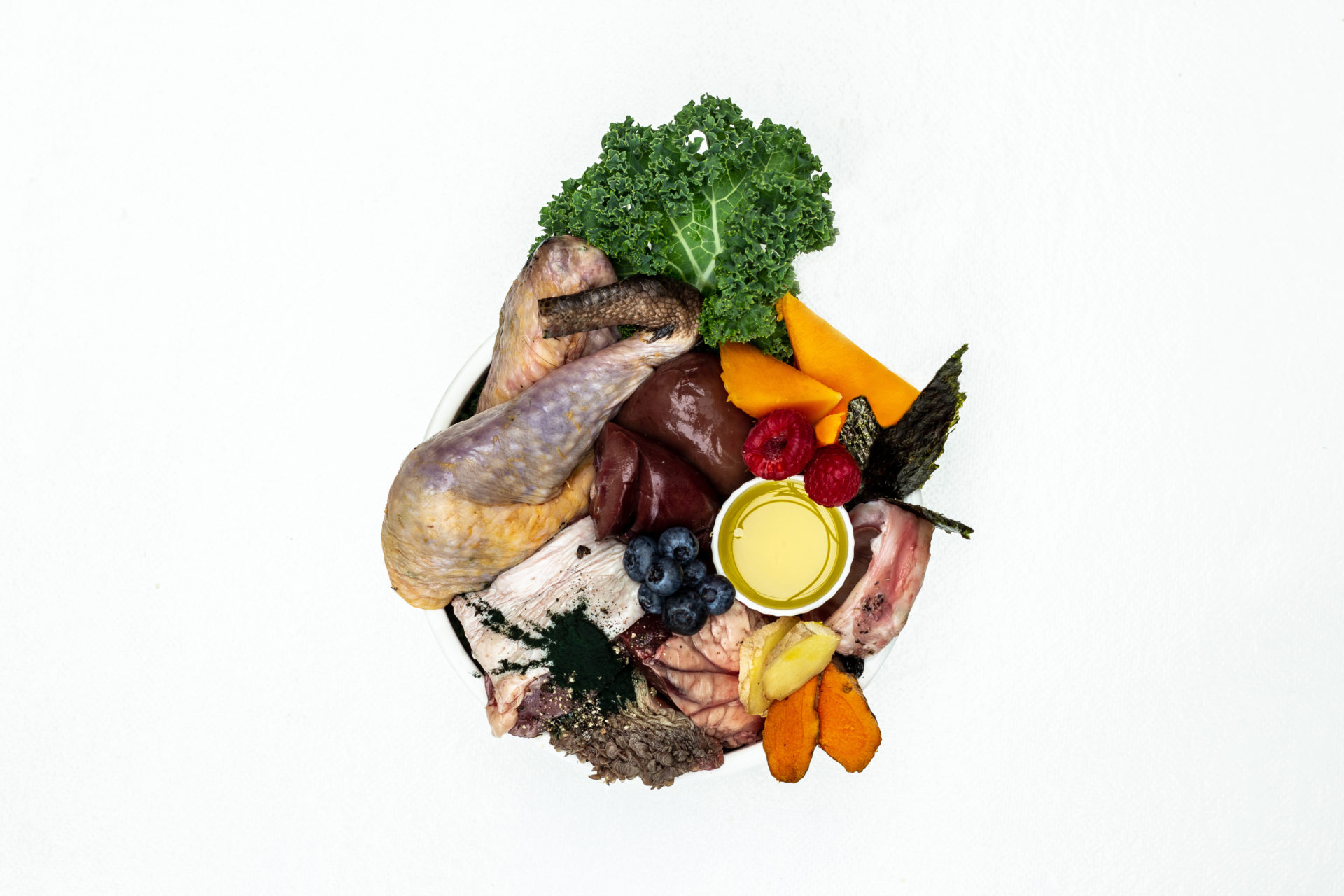
Adding Beef Mince improves health- The Science Behind Raw 2
The Science of feeding real meat to dogs
Study roundups, Caroline Griffith.
Adding Beef mince to dry food is better for dogs.
(If you believe that a more balanced microbiome, less chance of e.coli and more protective microbiota is a good thing.)
Published article:
https:// bmcvetres.biomedcentral. com/articles/10.1186/s12917-017-1073-9
A diet change from dry food to beef induces revisable changes on the faecal microbiota in healthy, adult, client-owned dogs.
Where and When:
Norway University of Life Sciences
Published May 2017 BMC Veterinary Research Journal
7 week Prospective Dietary Intervention Study
Authors: Kristin M.V. Herstad, Karina Gajrado, Anne Marie Bakke, Lars Moe, Jane Ludvigson, Knut Rudi, Ida Rud, Monika Sekelja, Ellen Skancke
Question in research: does adding real meat to a bowl of dry commercial food, influence the dogs digestion?
Study Participants: 11 Healthy Adult dogs, Varied Breeds, ages 1.5 -8yrs, Weights 10-30kg
Most owners were Vet professionals (gold star owners for protocol compliance)
All previously always fed commercial dry food, some with a few table scraps.
No dogs had had anti-biotics for six months before the study.
Housed in the same un-variable conditions.
What they did:
Participants ate the same commercial diet for the first 2 weeks
Week 3 – 25% Fresh Boiled Beef Mince added to the bowl
Week 4 – 50% Fresh Boiled Beef Mince added to the bowl
Week 5 – 75% Fresh Boiled Beef Mince added to the bowl
Participants ate the same commercial diet for the last weeks 6 & 7.
What was measured:
Stools measured at the end of week 2 and the end of week 5.
Faecel output, pH, Microbiota and SCFA’s (Short chain fatty acids)
Findings:
Faecel pH went up, became more acidic.
SCFA’s were influenced. SCFA Isovaleric Acid especially increased.
Microbiota were significantly Influenced.
Particularly the species Clostridia Hiranonic went up, Faecalibacterium Prausritzi went down.
The effects were reversed when the dog when the dog s were reintroduced to commercial dry in weeks 6 and 7.
Are these results favourable to a dog?
Isovaleric Acid is linked with greater beneficial gut bacteria, particularly Bifido Bacterium and Lactobacilus, and a reduction in E.Coli1.
Absolutely favourable!
Clostridia Hiranonic is a Beneficial strain of bacteria in the Clostridia species, which account for up to 40% of the total gut microbiotia2.
They are well-known as indispensible regulators of intestinal homeostasis and reported as essential for the normalisation of germfree mice3.
This beneficial bacteria supports known enzymes* that encourage Bile Acids to convert from what are called Primary Bile Acids, into Secondary Biles Acids which then inhibit growth and germination of unwanted or unbeneficial bacteria Clostridia Difficile, Clostridia Perfringens and E.Coli4.
Again, absolutely favourable, and also goes to show the interplay between the different bacteria of the same family species. There is a whole community of different flora living, transforming and balancing themselves given favourable conditions to do so.
Faecalibacterium Prausritzi is a microbiome seen in dogs, and other gut systems when a more cereal based, fibre-based diet is eaten. Whilst it is no surprise for it to reduce when more meat is fed it again shows the diversity of microbiome and the speed in which it can change. Usually a lower rate of F.Prausritz is associated with low butyrate levels contributing to IBD in humans, and suspected dogs in too. However, in the Boiled Beef added diets the dogs had greater presence of a different microbiota called Roseburia which influencing the needed Butyrate to elevate instead.
Results:
We can see that adding fresh meat, even boiled beef, to a dog’s meal times improves their gut microbiome, supports in protecting their gut from challenging bacteria such as E.Coli and the Clostridia bacteria related to digestive upsets in dogs and puppies.
There is a whole community of different flora living, transforming and balancing themselves in your dog’s gut system, importantly when given favourable conditions to do so. I personally see this as very positive in terms of feeding real meat to dogs, even cooked fresh meat on top of kibbles, dry processed foods.
* 7a- dehydroxylating enzyme
1 Hirotaka Igarashhi, Koichi Ohno, Naoaki Matuski Analysis of fecal SCFA concentration in miniature dachshunds with inflammatory colorectal polpys. Europepmc.org/article/5658568
2,3 – Wang S, Martins R, Sullivan MC, et al. Diet induced remission in chronic enteropathy is associated with altered microbial community structure and synthesis of secondary bile acids. Microbiome Journal 2019;7:126
also 2,3 – Guard BC, Honneffer JB, Jergens AE, et al. Longitudinal assessment of microbial dysbiosis, fecal unconjugated bile acid concentrations, and disease activity in dogs with steroid‐responsive chronic inflammatory enteropathy. J Vet Intern Med. 2019;33:1295‐1305.
4 Pingting Guo, Ke Zhang, Xi Ma and Pingli He. Clostridium species as probiotics: potentials and challenges. Journal Animal Science Biotechnology Feb 2020





